Managed services ‘always on’ expertise
Proactive, scalable support, across all your IT environments, from experts in the field.
Cloud & Datacentre
Cyber Security
Digital Workspace
Modern Workplace
Specialists on tap
Technical support services that deliver success
We’re no strangers to providing seamless managed services and support to our clients – it’s been a part of our core IT offering since 2003. From this page you’ll be able to discover more about each of the four managed services packages we provide: Cloud & Datacentre, Modern Workplace, Cyber Security, and Digital Workspace.
By partnering with us you’ll be receiving industry leading support – and we’ll develop and maintain a detailed knowledge of your business to build lasting relationships, across all levels. Our flexible approach means that we cater for businesses of all shapes and sizes, that span many sectors throughout the UK and beyond. Our packages can be tailored too – ranging from small tactical post-project support, through to fully outsourced managed services where we provide the full IT departmental function of your business including dedicated onsite teams.
We manage IT
We provide professional, managed IT services that allow businesses to focus on their core strengths and leave IT to us. Our team of experts can design, secure, and maintain cutting–edge IT solutions to ensure that your business is always up to date. With our comprehensive range of services, you can trust us to provide the best support at all times.
Cloud & Datacentre
Unleash the power of cloud computing and ensure an always available and reliable datacentre infrastructure.
Cyber Security
We can safeguard your organisation’s digital assets with comprehensive and proactive cyber security solutions.
Digital Workspace
Why not streamline your operations with a smart and collaborative digital workspace tailored to your unique needs.
Modern Workplace
You could empower your workforce with cutting-edge technologies for seamless collaboration.
You can put your trust in us
When working with us, you will not only have access to a carefully selected team of certified IT professionals and experts, but to a host of well–known and trusted partners.
Our partners include leading vendors of hardware, software, cloud and datacentre services, as well as security, telecoms, and networking solutions. In addition to the exceptional support services provided by our experts, having access to these well–established partnerships ensures that you will always have access to the most current and secure technologies available.
Ultimately, having access to our team of certified professionals and valuable technology partnerships will not only increase the efficiency and effectiveness of your operations, but also help you stay on the cutting edge of technology.

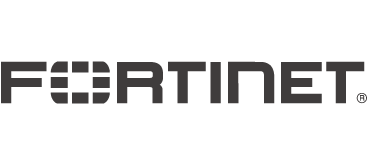
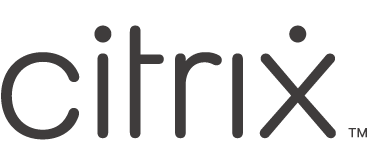
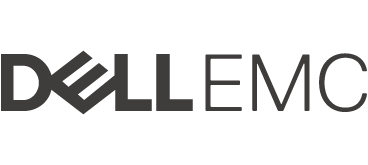
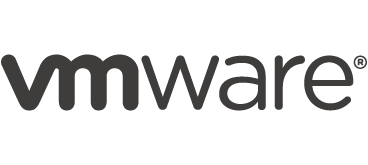
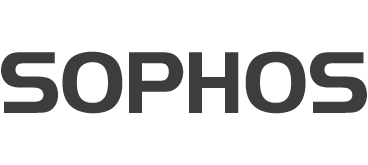
SCOPE OF SERVICES
We take a partnership approach to working with our clients: your business is our business
It’s all about understanding your organisation, meeting its challenges and helping to drive success. We do this through our commitment to excellent service delivery. So, whichever aspect of our managed services you need, here’s what you can expect.

24/7 Support

Governance
management services give your business ongoing access to operational, technical governance, and strategic advice.

Part of your team

Excellence




A range of support
When you choose our Managed Services you can rest assured we have the solutions to meet your needs.
Click here to build a solid foundation with Commercial’s expert advice.
Request a call
Contact us today



NOC
Round the clock support
Our NOC covers L1 to L3 support with experienced and certified teams who work to stringent SLAs and KPIs.
We provide ITIL aligned ITSM platform and practices including Incident, Problem, Change and Service Request categories. The team covers all aspects of Managed Services support from:
- Cloud & Datacentre
- Modern Workplace
- Cyber Security
- Digital Workspace
PROACTIVE MANAGEMENT & UPDATING
Always up to date
We’ll provide regular scheduled patching of all devices within your environment, from Cloud & Datacentre through to user devices in the Modern Workplace, to ensure that you are always up to date.
It’s crucial to stay on top of regular scheduled firmware updating of all devices and appliances within your environment to ensure that you are never at risk and maintain the supported versions. In addition, we provide regular scheduled software updating ranging from:
- Operating Systems to core systems such as Exchange and SQL, to ensure a secure and stable environment.
- Windows Image Maintenance & Deployment: regular updates and releases of new Windows 10/11 builds and images to be deployed via M365, Configuration Manager, AVD and Citrix platforms.






PROACTIVE CYBER SECURITY MONITORING
Keeping systems secure
We provide proactive cyber security agents deployed throughout your environment via a range of tooling to constantly check for threats.
This means we can quarantine files, data and devices when required, as well as providing security auditing and reporting services.
ProtectionEffectively identify suspicious activity and stop potential threats before they become real issues. |
PerformanceProactive monitoring can ensure that networks and systems are optimised and interruptions minimised. |
ComplianceMeet and adhere to the industry regulatory and compliance standards, reducing risk. |



PROACTIVE MONITORING & ALERTING
Nipping issues in the bud
By providing proactive monitoring and alerting agents deployed within your environment to gather technical data and information regarding the health, capacity and performance of your IT environment.
We can identify and resolve issues quickly, efficiently and often before it becomes an issue.
UptimeProactive monitoring and alerting ensures issues are identified and remedied quickly, increasing uptime. |
Lower costsBy addressing potential problems before they cause problems, operational costs can be reduced. |
Customer serviceIdentifying and remedying issues that could affect customer service, improves customer satisfaction. |
ONSITE SUPPORT
In the UK and beyond
Experienced and certified Field Engineering teams providing onsite support, floorwalking, break/fix and assist in major project deployments or simply providing cover for your onsite teams during a busy period.
This frees up time for your employees to get involved in business-affecting IT projects.
TroubleshootingOur field engineers are on the spot to deal with hardware or software issues. |
InstallationInstallation and configuration of new equipment or hardware upgrades. |
TrainingWhere needed, we’ll provide training on the use of newly implemented systems. |






APPLICATION PACKAGING & DEPLOYMENT
Easy to deploy
By creating a “package” or installation that contains the necessary executable files, configuration files, scripts and other components needed to install and/or execute an application, deployment and management is fast and consistent throughout your organisation.
We provide this service via InTune, Configuration Manager, AVD and Citrix.
In short, regular updating of software packages ensures a consistent suite of applications throughout the business that can be easily deployed and withdrawn as and when required.
StreamlinedStreamline your IT operations by allowing installations and updates to be performed in a single step. |
ProductivityQuick access to the latest applications on desktops and laptops without manual interventions. |
SavingSave the time and effort of building and managing the software deployment infrastructure yourselves. |
BACKUP & DISASTER RECOVERY
Rapid & reliable restoration
We leave nothing to chance, providing regular scheduled backup testing and restoration of critical data, applications and systems. This ensures that, when needed, you are able to recover your data, applications and systems in a timely manner and continue working successfully.
In addition, providing regular scheduled Disaster Recovery (DR) bubble testing and full recovery testing of platforms and systems means that when a DR scenario occurs, your systems and processes are recovered without a moment wasted.
ContinuityDisaster recovery services help ensure that a business remains operational by providing fail-safes for mission-critical data. |
ProductivityMinimise the downtime caused by a disaster, and employees can stay productive and focused on their jobs. |
ComplianceIn regulated industries, a reliable backup and disaster recovery solution is essential for staying compliant with auditing and security policies. |






Health Check Services
Regularly assessing value and suitability
We provide ongoing regular cost management and optimisation services to ensure that the technology you use is the most efficient.
This is alongside ongoing regular health checks to ensure that all your environments are up-to-date and compliant with the organisational standards set out in the initial designs.
PerformanceIdentify elements that could be impacting system performance so they can be rectified swiftly. |
Cost savingProactively addressing any potential issues before they escalate can save the cost of repair or downtime. |
ProtectionSystem health checks can improve the overall defences of the system, by detecting vulnerabilities. |
Tailored services
We offer a range of services and tailored solutions for a range of different sectors and industries, including retail, healthcare, government, education, technology, tourism, charity, insurance, police, financial, legal, and manufacturing..
Healthcare
Government
Education
Technology
Retail
Tourism
Charity
Insurance
Police
Financial
Legal
Manufacturing
Services in the manufacturing industry include supply chain management software, manufacturing intelligence and predictive analytics, and industrial automation and control systems.

Established in
1991
Don’t just take
our word for it…
Commercial deliver. We are fortunate to work with some amazing partners. Here are some examples of great things we hear every day.
outsourcing to the experts
Managed service areas
We specialise in providing outsourcing solutions to help businesses thrive in various managed service areas. We understand the challenges and complexities involved in managing critical aspects of your organisation, which is why we offer our expertise and support to lighten the load and drive your success.
Within our website, you’ll find detailed information about the various managed service areas we cover. We provide insights into our approach, methodologies, and the benefits of partnering with us. Explore our range of services, discover how we can optimise your operations, and learn how our customised solutions can propel your business forward.
Delve into the world of managed service areas on our website, explore our capabilities, and take the first step towards unlocking new levels of efficiency, productivity, and success for your organisation. Partner with us and experience the difference that outsourcing to the experts can make.

Modern Workplace
Keeping up with the speed of change means more technologies, and that can add up to a significant amount of time to manage. We can set you up for success by handling the creation, customisation, administration, and maintenance of modern workplace technologies, such as Microsoft 365, Azure Virtual Desktop, Citrix, and Remote Desktop Services.

Cloud & Datacentre
Creating and maintaining a reliable cloud and datacentre system is crucial. As employees continue to work remotely, outsourcing the extensive task of constructing and preserving a top-notch IT infrastructure becomes essential to ensure seamless access to all the necessary technology for business operations.

Cyber Security
Entrust the paramount safety and security of your esteemed organisation to our team of dedicated specialists who will maintain it continuously, ensuring that all systems are consistently updated, optimised for efficiency, meticulously verified for reliability and primed for the ever-evolving threat landscape.

Digital Workspace
By leveraging our expertise and entrusting the responsibility of your digital workspace to our capable team, you liberate yourself from the burdensome tasks of procuring, installing, customising, and independently managing your digital office systems. Our collaborative approach empowers you to focus on your core business activities while reaping the benefits.
Send our Managed Services team a message
our top-of-the-line Managed IT Services
In today's fast-paced and digitally-driven world, a robust and efficient IT infrastructure is essential for businesses to thrive. However, managing complex IT systems can be challenging and resource-intensive. This is where our Managed IT Services come to the rescue, offering you a seamless, cost-effective, and hassle-free IT management experience.

Simone Hindmarch
Co-founder and managing director
Customer Safety:
At Commercial, customer safety and data security are paramount.
That’s why we utilise one-time passwords (OTP) to verify email addresses and ensure a secure user experience.
When communicating with us via our website, you’ll receive a unique OTP via email, which acts as a temporary code to confirm your identity.
This additional layer of authentication safeguards against unauthorised access and protects your personal information from potential threats. By implementing OTP verification, we maintain the highest standards of confidentiality, providing our valued customers with peace of mind and a safe environment for their online interactions.
Your trust is our priority, and we are committed to upholding the utmost security measures to protect your data at every step.









